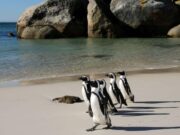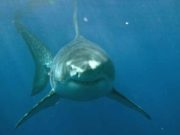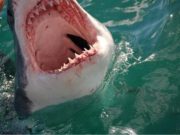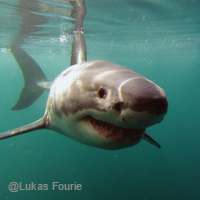Science
Cheerful and chirpy Oystercatchers
The Oyster-catcher ( AFR: Swattobie) is one of those birds that cannot be confused with any of its neighbours, for its brilliant black...
Beacons of Light on the Cape Whale Coast
Burning upon some hidden shore across the sea one night, A little reef, the captain said, he saw a shining light. He said...
Mussel matchmaking and the glue that holds them
New research shows how mussels find the perfect match. For mussels, fertilization occurs between eggs and sperm that have been released into the...
Abalone- mollusk we will soon only see on a postcard
The South African abalone, Haliotis midae, is one of the largest molluscs on earth, attaining a weight of nearly 2kg and a ripe...
Barnacles – Bravehearts of the surfzone
Billions upon billions of attached animals like barnacles, mussels and oysters owe their very lives to the sweep of the tides for the...
Marine Tourism
Billions of Blue Jellyfish Wash Up on American Beaches during 2015
The animals known as "by-the-wind sailors" stay out on the open ocean—until the winds change
In recent weeks, about a billion jellyfish-like "purple sailors"...
Why do stars twinkle ?
Stars twinkle. Planets shine steadily. Why?
Stars twinkle (scintillate) because they’re so far away from Earth that, even through large telescopes, they appear only...
Beached dead whales can alter the ocean’s carbon footprint
Decades of whaling and fishing for the largest species have altered the ability of oceans to store and sequester carbon.
An individual whale contains...
Sharks have cavity-proof teeth
Shark teeth are covered in fluoride, making them cavity-resistant. One 2012 study published in the Journal of Structural Biology found that sharks' enamel...
#GreenXmas @intheOverberg
We are grateful to the champions @intheoverberg @WWFSouthAfrica @GoSocialSA @GoToSouthAfrica @ShotLeft who created a twitter #chat platform on 25 November where we could share...
















